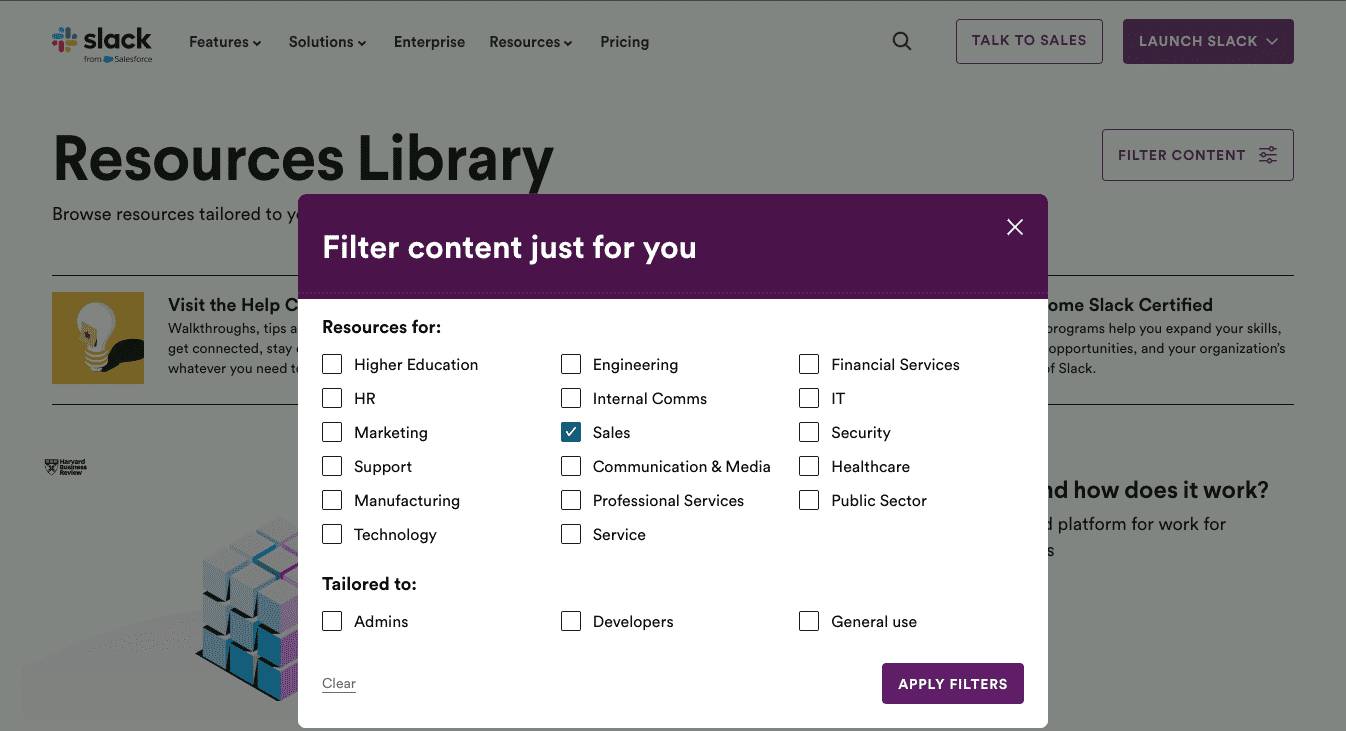Optimize Opportunities and Collaborate on Value
Learning Objectives
After completing this unit, you’ll be able to:
- Optimize Slack value specific to industry trends and best practices.
- Summarize your findings to share with leadership.
Three Phases of the Slack Value Realization Methodology
In the previous unit, you learned about the first phase of Slack’s Value Realization Methodology—Quantify. In this unit, you learn about the other two phases: Optimize and Collaborate. As a reminder, here’s what's expected at each phase of the value realization methodology.
-
Phase 1: Quantify: Understand your team's business goals and match Slack's features and metrics to show how using Slack helps achieve those goals.
-
Phase 2: Optimize: Analyze current metrics and identify areas for improvement. Develop a value roadmap to optimize your Slack instance using best practices.
-
Phase 3: Collaborate: Create a value summary that includes success stories and suggestions to help improve value and get business leaders more involved.
Phase 2: Optimize
In the second phase, Optimize, you consider ways to increase value and recommend Slack usage to meet business KPIs.
Value Maps by Line of Business
Because the Slack value realization methodology focuses on a single team or line of business, you can access different value maps for different teams. The next examples show how different teams can use Slack to fuel their business units and increase ROI.
Line of business |
Business value drivers |
Distinctive Slack solutions and use cases
|
Relevant impacted metrics |
Average customer impact we’ve seen |
|---|---|---|---|---|
Sales |
Enhance sales team productivity |
|
|
|
Service |
Boost agent efficiency with automation |
|
|
|
Engineering |
Ship quality code faster |
|
|
|
Marketing |
Refine time to market |
|
|
|
Human Resources (HR) |
Hire and onboard new hires faster |
|
|
|
Legal |
Manage risk and compliance |
|
|
|
Strengthen Your Slack Value Perspective for Each Line of Business
Need some inspiration based on your specific needs? Visit the Slack Resources Library for more inspiration for Slack utilization trends and best practices based on industry. You can click Filter Content to filter by line of business or role.

Once you've identified value opportunities and the quantifiable business impact of Slack on your team, you can prepare an action plan or recommendations for optimization. You can then share this with executive sponsors and stakeholders to ensure agreement on how to execute and use metrics to track progress.
Phase 3: Collaborate
In this phase, you share your findings with leadership, highlighting key insights and recommendations to reinforce informed decision-making about how to use Slack at your organization. Your findings from the first two phases should be summarized to include:
- A value map
- Survey results
- Supporting data
- Any ROI calculations
- Recommended opportunities to improve your Slack usage
Formulate Recommended Opportunities
Look for key themes in current Slack usage by examining the results of the surveys and user interviews from the first phase. Repeated topics and common responses provide clues for opportunities to expand and improve the way you use Slack. Cite these themes and supporting data when presenting your recommendations to leadership. For example, say you’re presenting a Slack value map to your Sales department. Based on your discovery work with the Sales team, you found common themes around:
- Integrating sales tools into Slack
- Automating common sales tasks and workflows
- Reducing time spent on non-selling activities
With these themes in mind, you consult the value map to select the opportunity that is likely to align with business objectives and engage your executive sponsors. Your story might look something like this:
-
Challenge: Sellers spend too much time chasing the right information and tracking down the right people for deal approvals.
-
Solution: Create a deal approval workflow where finance and leadership are notified directly in Slack of approval requests, enabling sellers to respond to customers more efficiently.
-
Impact: Increased sales velocity by 10% of deals closed one quarter earlier.
During this phase, let the leadership team ask questions, share concerns, provide feedback, and brainstorm ways to implement your recommendations.
Next Steps
After presenting your findings to leadership, there are several steps you can take to expand the value of Slack across your organization. Here are just a few steps you can take to make sure you continue to reinforce Slack’s value across your organization.
- Revisit your findings regularly in quarterly reviews or executive business reviews.
- Share Slack value stories broadly to inspire other parts of your company.
- Repeat the steps to realize and increase value for another line of business at your company. Remember, set yourself up for success by selecting one that has the most mature Slack usage.
- Stay current and familiar with Slack features and capabilities. Improve your Slack skills by feature or topic at slackcertified.com or explore resources by role or need at the Slack admin resource guide.
Since Slack’s value realization approach focuses on one team or business unit at a time, create different value maps for different groups. Use these maps to recommend ways for each team to get more value from Slack. Share your results and ideas with leadership and work together on a plan that benefits everyone.